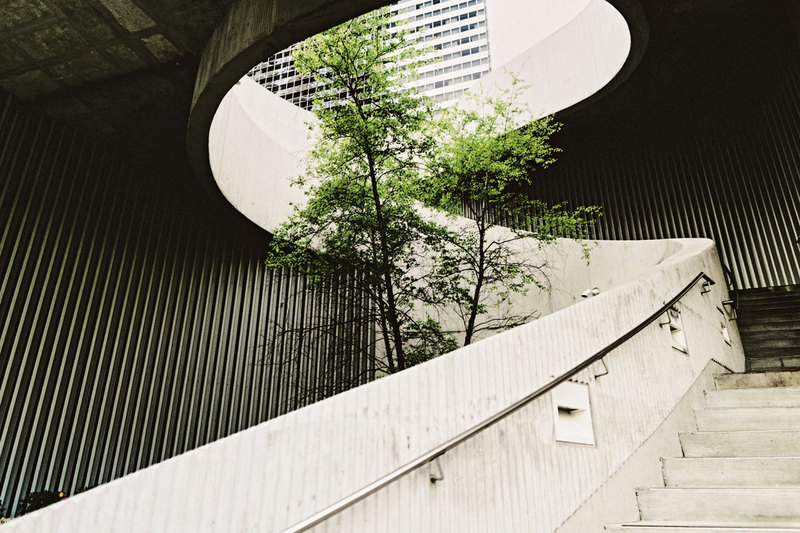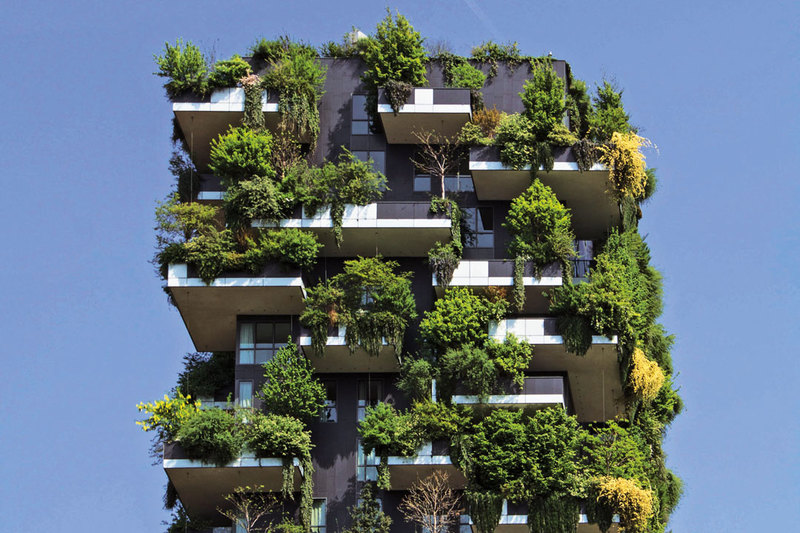
In the MVB Buildings and Circular Economy Seminar in 2019 there was also an excellent presentation by Vibeka Grupe Larsen from the Danish Association of Architects outlining and recommending ways in which architecture can positively assist the search for the Global Goals for Sustainable Development. In this synopsis and commentary by MVB Chairman Alistair Speirs, all of Vibeke’s main points are presented and but not necessarily in their original format or context, but hopefully this has stayed true to their original intent.
Ms. Larsen started her presentation by re-emphasizing the reasons why we have to move to sustainability:
- The Environmental: the overuse of resources and limited raw materials.
- The Social: social problems will grow if we don’t secure welfare for all people.
- The Financial: we need to see costs as total not just immediate and realise that climate change will actually cost a lot more than preventing it!
“Business in no way ideally accelerates the transition to a prosperous future for all” she said, “we need to focus on three bottom lines: people, profit and planet”.
In 2023, Copenhagen will host the Union of International Architects World Congress to explore the theme of ‘Sustainable Future’, and how architects can contribute to the UN Sustainable Development Goals, but they already have the UIA SDG Dhaka Declaration which we reproduce in full on the next page. This really is their chart of commitment.
But what exactly within these theoretical pledges can architects do? Here are some areas highlighted by Ms. Larsen:
- Architects can promote measures that help cities to be more inclusive, safer and more resilient and adaptive to climate changes with special attention to vulnerable segments of society.
- Architects can seek to design for durability and sustainable life cycle in building components and materials, favouring recycled materials wherever possible.
- They can move to “healing architecture”: emphasizing light, art, sound and air movement. Quality in building design means healthier citizens.
- Old city areas can be redesigned to create recreational oases and residential areas.
- New architecture for schools can help school system development and sustainable pedagogy.
- Architecture can fight climate change by creating rainwater handling and social gathering spaces for community learning
- Architecture helps social cohesion by giving a sense of identity and belonging, of ownership and engagement, shaping communities through durability.
“The wealth of society is tied up in bricks and mortar” Ms. Larsen said, encouraging us to look to the circular economy in the future so that “built capital” can be released. She said that buildings should now be flexible to meet new needs, with “design for disassembly” leading the way in circular construction, with new efficient building processes allowing flexibility for transformation.
Ultimately, she recommended that “re-use is good for the bottom line”, urging us to focus on reclaiming used materials and reusing them, recycling into resource efficiency systems allowing transformation and a much more ‘sharing economy’.
The cost of not acting on climate change “was over US$ 15 trillion”, she said. Inspiration to take action indeed.
Vibeke Grupe Larsen possesses a broad spectrum of knowledge on sustainable cities and buildings—solutions, leadership, business development, strategy, and SGDs. Vibeke grupe Larsen is a lecturer and teacher with competencies including architecture and sustainable building design, process, project, and product development, research, and development, communication and a change management and leadership.
Over the last few decades, tremendous progress has been made in improving the health, education, and well-being of people around the world. However, this development has been accompanied by environmental damage, climate change, and resource depletion as well as social and cultural challenges. In 2015, the nations of the world came together and laid out the United Nations 17 Sustainable Development Goals to be achieved by 2030.
Architecture interacts with each of the 17 Sustainable Development Goals and architects can help the goals to be achieved. As architects, we have the responsibility to contribute to the built environment and make choices that change the world for the better—through better buildings, settlements, landscape architecture and urban planning.
The UIA, UIA SDG Commission, Arcasia and the Institute of Architects Bangladesh signed the UIA SDG Dhaka Declaration on 13 April 2019, calling on architects to strive for these Goals in their own practice and as civic leaders.

UIA SDG Dhaka Declaration
We call on architects worldwide to take action in their own practice and as civic leaders to shape their work and their words to help achieve these goals:
- End poverty: Architects can seek to build in ways that help to eradicate poverty, by designing low-cost housing and institutions that are safe, healthy, and resilient.
- End hunger: Architects can through planning, landscape and building design protect ecosystems and preserve areas for food production.
- Good health and well-being: Architects can design and plan so that exposure to communicable diseases and pollution is reduced, daylight, good acoustics and air quality is provided, and healthy levels of activity promoted.
- Quality education: Architects can design educational facilities that are affordable and inclusive.
- Gender equality: Architects can help to shape buildings, settlements and urban areas to include all persons, regardless of gender and can work to promote gender equality in the design and construction industry.
- Clean water and sanitation: Architects can design and plan to avoid water waste or excessive runoff, and to reduce the encroachment of saltwater on freshwater aquifers and bodies.
- Affordable and clean energy: Architects can design and plan buildings and settlements to reduce energy use, produce renewable energy where feasible, adapted to geographic, climatic and cultural conditions.
- Decent work and economic growth: Architects can specify building materials produced in safe and clean environments, and work to ensure secure conditions on building sites and in demolition processes.
- Industry, innovation and infrastructure: Architects can seek to use services, products and systems that pollute less, use less energy, produce less waste, and provide solutions that are safe, healthy and less costly.
- Reduced inequalities: Architects can promote design and planning approaches that are socially responsible, inclusive and accommodate the needs of all people.
- Sustainable cities and communities: Architects can promote measures that help to make cities more inclusive, safer and more resilient, and adaptive to anticipated climate change, with special attention to vulnerable segments of society.
- Responsible consumption and production: Architects can seek to design for durability and for sustainable life cycles in building components and materials, favoring recycled materials wherever possible.
- Climate change: Architects can take action to reduce or eliminate the climate changing emissions associated with the construction and operation of the buildings they design, and make their designs adaptable to anticipated changes in climate.
- Life below water: Architects can exercise special care for buildings and settlements in coastal regions and in fragile aquatic ecosystems, taking all possible steps to reduce harmful effects of waste and pollution on water.
- Life on land: Architects can help promote urban development that minimizes sprawl and so reduces threats to biodiverse habitats; they can design buildings and settlements that integrate landscapes, provides habitats and connects with larger ecosystems.
- Peace, justice and strong institutions: Architects can advocate for policies on their projects that reduce opportunities for corruption, bribery, or unjust labor practices.
- Partnerships for the goals: Architects can join with those who work to advance the goals. Working together we can achieve a prosperous and sustainable future.
UIA
International Union of Architects (UIA) is an international non-governmental organisation based in Paris. Established in 1948, it is the only organisation representing architects across the globe working to unify architects, influence public policies on construction and development, and advance architecture in service to the needs of society.
This article is originally from paper. Read NOW!Jakarta Magazine March 2020 issue “Property, Architecture & Design". Available at selected bookstores or SUBSCRIBE here.






